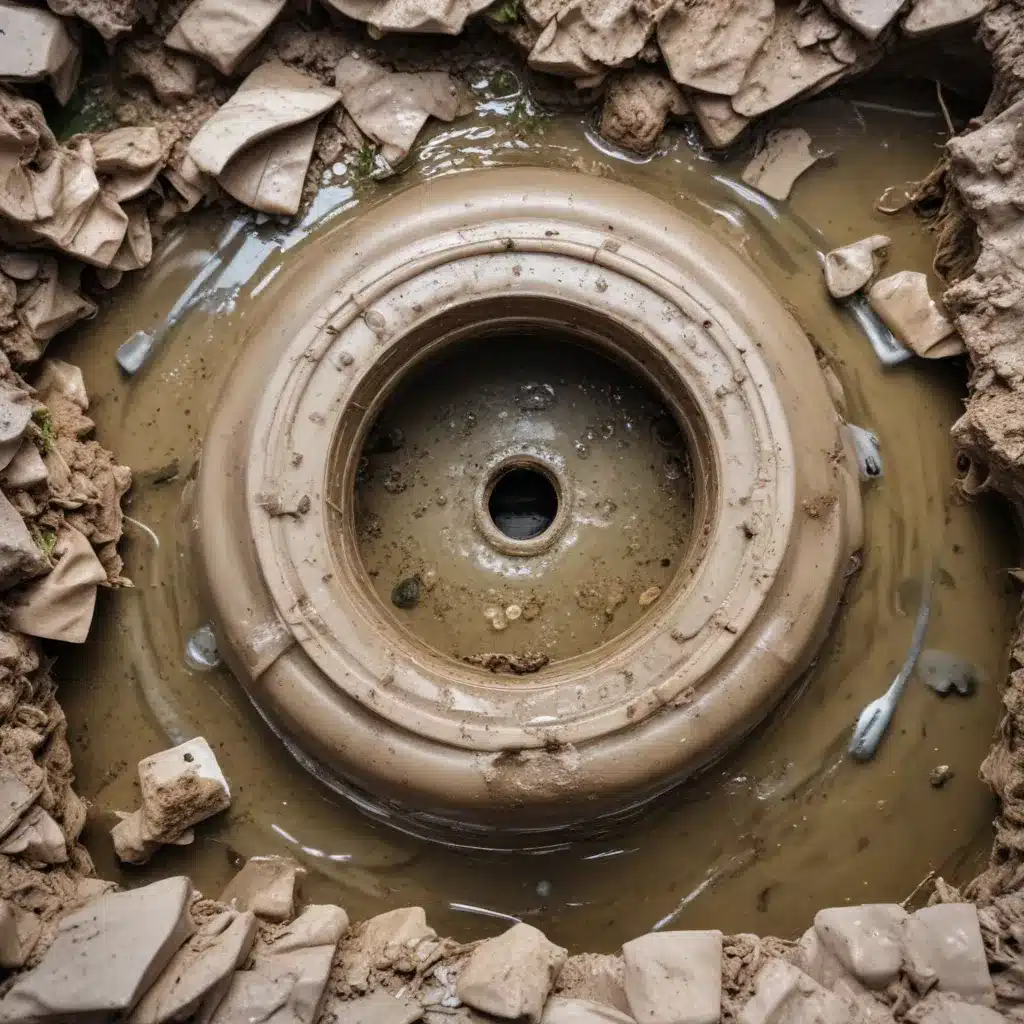
As an experienced water damage restoration specialist, I’ve seen my fair share of sewage backup nightmares. These situations can be not only incredibly frustrating but also pose serious health and safety risks to you and your loved ones. Whether it’s a result of a clogged pipe, a malfunctioning septic system, or a municipal sewer line failure, sewage backups can quickly turn a home into a breeding ground for dangerous bacteria, viruses, and mold.
Identifying the Dangers of Sewage Backups
One of the primary concerns with sewage backups is the potential exposure to pathogens. Sewage can contain a wide range of harmful microorganisms, including E. coli, Salmonella, Shigella, and Hepatitis A virus. These can cause serious illnesses, such as gastroenteritis, hepatitis, and even life-threatening infections. The risk is especially high for young children, the elderly, and those with compromised immune systems.
In addition to the health hazards, sewage backups can also lead to significant structural damage to your home. The water can seep into floors, walls, and porous materials, creating the perfect environment for mold growth. Untreated mold can cause respiratory problems, allergic reactions, and even neurological issues. The cleanup process can be both complex and costly, requiring specialized equipment and techniques to ensure the complete removal of all contaminated materials.
Responding Quickly and Safely
The first and most crucial step in addressing a sewage backup is to act quickly. The longer the contaminated water remains, the greater the risk of further damage and health issues. As soon as you notice any signs of a sewage backup, such as a strong odor or water pooling in the basement or bathroom, it’s important to shut off the water supply and evacuate the affected areas.
Once the area is cleared, it’s essential to call in a professional water damage restoration company. These experts have the necessary training, equipment, and experience to handle sewage cleanup safely and effectively. They’ll begin by assessing the extent of the damage and developing a comprehensive plan to remove the contaminated water, disinfect the affected areas, and properly dispose of any contaminated materials.
Safely Restoring Your Home
During the restoration process, it’s crucial to follow strict safety protocols to protect yourself and your family. This includes wearing personal protective equipment (PPE), such as gloves, goggles, and waterproof boots, to minimize the risk of exposure. Proper ventilation is also essential to prevent the spread of airborne contaminants.
The restoration process typically involves the following steps:
-
Water Extraction: The water damage specialists will use powerful pumps and extraction equipment to remove the standing sewage water quickly and efficiently.
-
Disinfection: All affected surfaces, including floors, walls, and any salvageable materials, will be thoroughly disinfected with EPA-approved antimicrobial solutions to kill any remaining pathogens.
-
Drying and Dehumidification: High-powered air movers and dehumidifiers will be used to thoroughly dry the affected areas, preventing the growth of mold and mildew.
-
Disposal and Reconstruction: Any materials that cannot be safely cleaned and disinfected, such as porous items like carpeting or drywall, will be properly disposed of. The team will then work to reconstruct and restore the affected areas to their pre-loss condition.
Navigating the Insurance Claims Process
Dealing with a sewage backup can be a stressful and overwhelming experience, but it’s important to understand that your homeowner’s or renter’s insurance policy may provide coverage for the cleanup and restoration costs. However, the claims process can be complex, and it’s crucial to work closely with your insurance provider to ensure a successful outcome.
One of the key things to keep in mind is the importance of documentation. Be sure to take detailed photographs and videos of the affected areas, as well as keep a record of all the repairs and cleanup costs. This will help strengthen your claim and ensure that you receive the full compensation you’re entitled to.
Additionally, it’s a good idea to work with a reputable water damage restoration company that has experience navigating the insurance claims process. They can assist you in communicating with your insurance provider, providing the necessary documentation, and ensuring that the restoration work is completed to the insurer’s satisfaction.
Preventing Future Sewage Backups
While dealing with a sewage backup can be a harrowing experience, there are steps you can take to reduce the risk of future occurrences. Regular maintenance and inspection of your home’s plumbing system, including the septic tank or municipal sewer line, can go a long way in preventing clogs and other issues that can lead to backups.
It’s also important to be mindful of what you flush down the drain or toilet. Avoid flushing non-biodegradable items, such as wipes, feminine hygiene products, and grease, as these can easily clog the pipes and contribute to sewage backups.
Finally, consider investing in a backflow prevention device. This specialized valve is installed on the main sewer line and helps to prevent sewage from flowing back into your home in the event of a blockage or system failure.
Conclusion
Sewage backups are a serious problem that can have devastating consequences for your home and your family’s health. By understanding the risks, responding quickly and safely, navigating the insurance claims process, and taking proactive steps to prevent future occurrences, you can minimize the impact and ensure that your home remains a safe and healthy environment for you and your loved ones.
If you ever find yourself dealing with a sewage backup in the Orlando area, don’t hesitate to reach out to the experts at https://orlandowaterdamagerestoration.net/. We’re here to help you every step of the way, from the initial cleanup to the complete restoration of your home.

